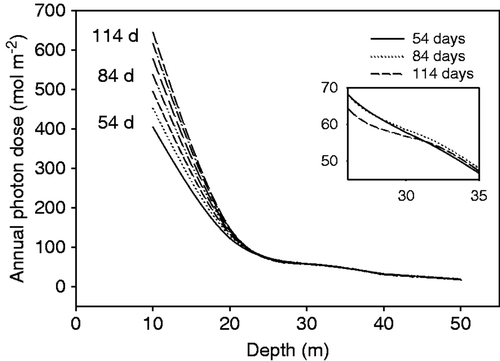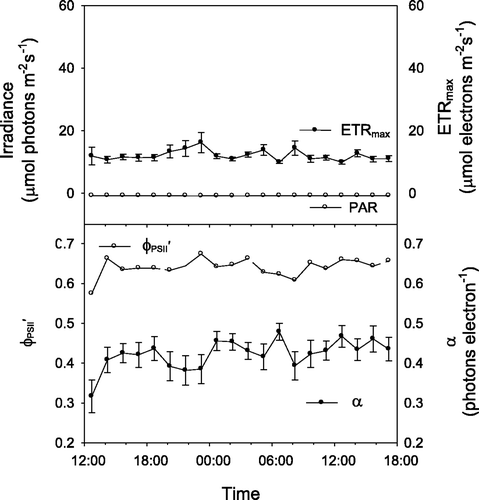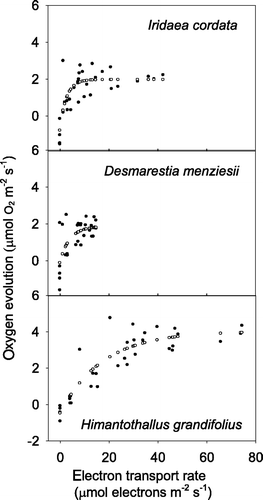Figures & data
Fig. 1. Map of the Windmill Islands showing relevant locations. Codes are as follows: BB, Brown Bay; LI, Lilienthal Island; MI, Molholm Island; PC, Powell Cove; SI, Shirley Island; SB, Sparkes Bay; WK, Wilkes. The map was provided by the Australian Antarctic Data Centre.

Fig. 2. Annual photon dose at different depths in near-shore waters at Casey. Values for different numbers of ice free days are presented; there were 84 days at the time of the study. Panel B (inset) shows a crossing over at approximately 30 m: the annual photon dose in shallow waters increases with an increase in the number of ice-free days, whereas at depths below 30 m the annual photon dose decreases with an increase in the number of ice-free days.

Fig. 3. Diel changes in photosynthetic parameters of Iridaea sp. and irradiance in a low light ice-covered environment derived from light response curves conducted every 90 min, where ETRmax represents the maximum rate of electron transport, α represents the initial slope of the PE curve, and represents the effective quantum yield of PSII energy conversion. Irradiance was less than 1 µmol photons m−2 s−1. Error bars are standard deviations.

Fig. 4. Diel changes in photosynthetic parameters of Iridaea sp. and irradiance in a high light ice-free environment derived from light response curves conducted every 90 min, where ETRmax represents the maximum rate of electron transport, α represents the initial slope of the PE curve, and represents the effective quantum yield of PSII energy conversion. Error bars are standard deviations.

Fig. 5. Oxygen evolution–electron transport rate curves derived from simultaneous in vivo measurements of ambient irradiance, ETR and oxygen concentration. Closed circles represent measurements; open circles represent the best fit line according to the model predictions.
